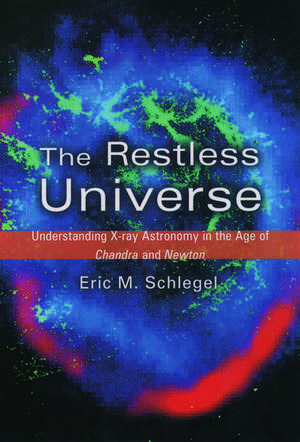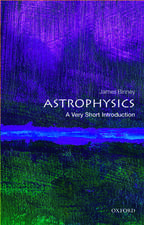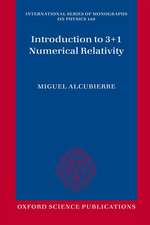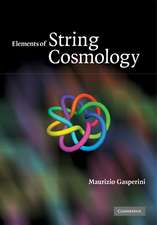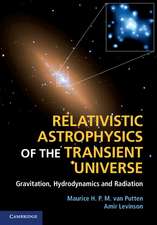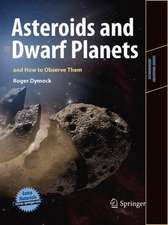The Restless Universe: Understanding X-Ray Astronomy in the Age of Chandra and Newton
Autor Eric M. Schlegelen Limba Engleză Hardback – 19 sep 2002
Preț: 166.61 lei
Preț vechi: 190.24 lei
-12% Nou
Puncte Express: 250
Preț estimativ în valută:
31.89€ • 34.65$ • 26.81£
31.89€ • 34.65$ • 26.81£
Carte tipărită la comandă
Livrare economică 10-16 aprilie
Preluare comenzi: 021 569.72.76
Specificații
ISBN-13: 9780195148473
ISBN-10: 0195148479
Pagini: 228
Ilustrații: 7 color halftones & 84 b/w halftones & line illus
Dimensiuni: 243 x 162 x 22 mm
Greutate: 0.54 kg
Editura: OUP OXFORD
Colecția OUP Oxford
Locul publicării:Oxford, United States
ISBN-10: 0195148479
Pagini: 228
Ilustrații: 7 color halftones & 84 b/w halftones & line illus
Dimensiuni: 243 x 162 x 22 mm
Greutate: 0.54 kg
Editura: OUP OXFORD
Colecția OUP Oxford
Locul publicării:Oxford, United States
Recenzii
"A highly readable account of the exploration of the Universe through X-rays, providing a solid foundation for those who wish to move on to read more about this exciting field of human knowledge."--Nature
"Schlegel has worked on NASA's Chandra satellite since before its launch 3 years ago. He melds a history of X-ray astronomy with a wide-ranging look at the fruits of Chandra and Europe's Newton. He paints an exhilarating portrait of what astrophysicists hope to learn from data generated by these vehicles."--Science News
"Schlegel discusses the history of the field and its hardware as well as the collection and interpretation of data. His summaries of past discoveries and suggestions of possible future findings will introduce nonspecialists to the more complete picture of the universe that x-rays offer."--Science
"By introducing the reader to the notion that what we see in the Cosmos is certainly not all that is there, Schlegel brings one to the realization that a more complete and accurate view of the Universe is at hand. Indeed, his marvelous description of the historical and cultural development of our use of X rays seems natural beside his explanations of how X rays now permit us to see structure where once we saw none--from shock waves flung out into space by exploding stars to diffuse, high-temperature gas that fills the 'visibly' empty space in clusters of galaxies. He brings to our mind's eye the vision of a restless, high-energy Universe, one until now just beyond the limit of our ability to see."--Dr. Jay White, Van Vleet Professor of Physics at Rhodes College
"Schlegel has worked on NASA's Chandra satellite since before its launch 3 years ago. He melds a history of X-ray astronomy with a wide-ranging look at the fruits of Chandra and Europe's Newton. He paints an exhilarating portrait of what astrophysicists hope to learn from data generated by these vehicles."--Science News
"Schlegel discusses the history of the field and its hardware as well as the collection and interpretation of data. His summaries of past discoveries and suggestions of possible future findings will introduce nonspecialists to the more complete picture of the universe that x-rays offer."--Science
"By introducing the reader to the notion that what we see in the Cosmos is certainly not all that is there, Schlegel brings one to the realization that a more complete and accurate view of the Universe is at hand. Indeed, his marvelous description of the historical and cultural development of our use of X rays seems natural beside his explanations of how X rays now permit us to see structure where once we saw none--from shock waves flung out into space by exploding stars to diffuse, high-temperature gas that fills the 'visibly' empty space in clusters of galaxies. He brings to our mind's eye the vision of a restless, high-energy Universe, one until now just beyond the limit of our ability to see."--Dr. Jay White, Van Vleet Professor of Physics at Rhodes College
Notă biografică
Eric M. Schlegel is a research astrophysicist at the Smithsonian Astrophysical Observatory, at the Harvard-Smithsonian Center for Astrophysics, where he is responsible for ensuring data quality for the Chandra X-Ray Observatory. He has also worked at NASA-Goddard Space Flight Center.
